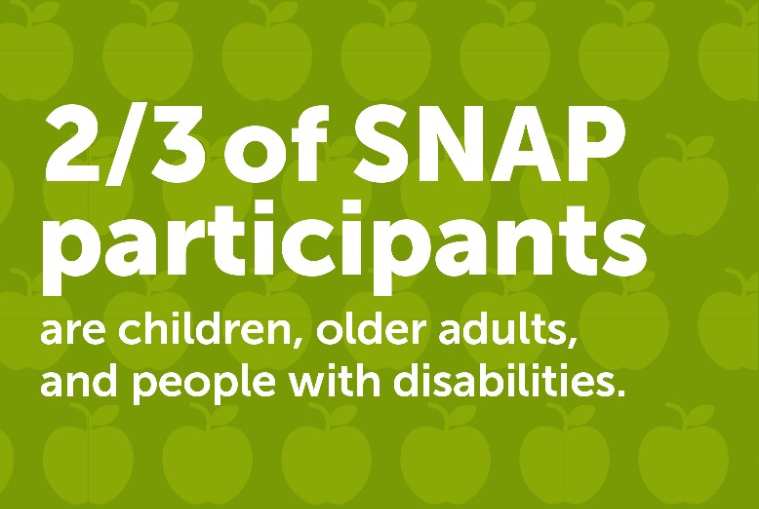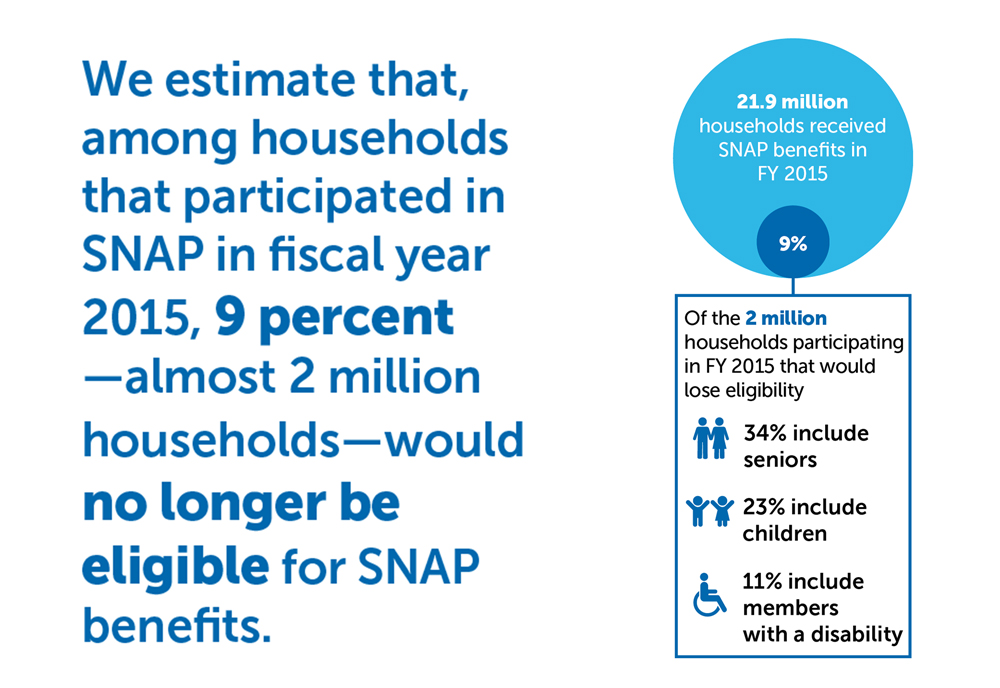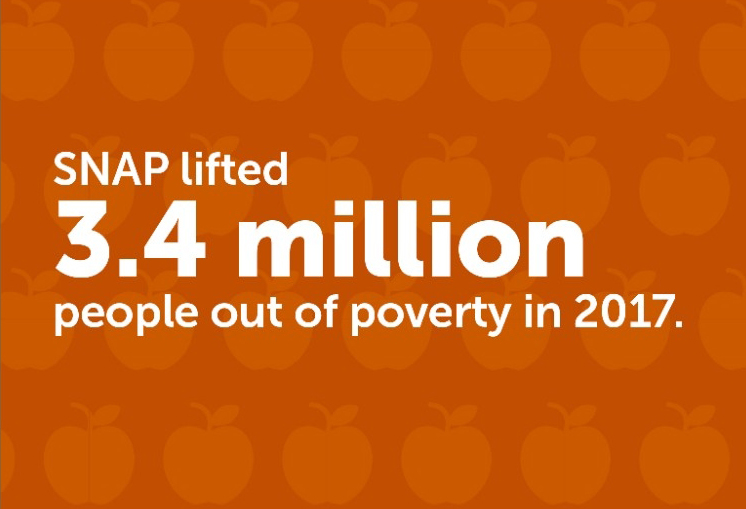
Share On Social!
40 million low-income people across the U.S. are in danger of losing a critical lifeline as federal funding for SNAP, commonly known as the food stamp program, hangs in the balance.
But just who are these families? What would losing benefits mean?
Two new research reports provide an answer.
SNAP & Families
SNAP provides temporary support to help people and families afford food. It is the nation’s largest nutrition assistance program, with $70 billion in funding in fiscal-year 2017.
 Latinos comprise more than 20% of SNAP participants.
Latinos comprise more than 20% of SNAP participants.
But 1 in 11 households who receive SNAP benefits would no longer be eligible under a revised House Farm Bill, according to data from Mathematica Policy Research cited by the recent State of Obesity report from Trust for America’s Health and the Robert Wood Johnson Foundation (RWJF).
Nearly 2 million vulnerable households would be affected:
- 34% of SNAP households include seniors
- 23% of SNAP households include children
- 11% of SNAP households include a person with a disability
Of the households with children who could lose eligibility, more than half, 53%, are living in poverty.
The State of Obesity report suggests strengthening SNAP, not cutting it.
Maintain and strengthen essential nutrition supports for low-income children, families, and individuals through programs—like the Supplemental Nutrition Assistance Program (SNAP) and the Special Supplemental Nutrition Program for Women, Infants, and Children (WIC)—and expand programs and pilots to make healthy foods more available and affordable through the program,” according to the full report.
SNAP & Benefits
Cuts to the program would have far-reaching ramifications and may disproportionately affect groups like Latino and other children of color and those in rural communities, according to another research review from RWJF.
 The research argues that SNAP has four essential benefits:
The research argues that SNAP has four essential benefits:
- Lifts millions of people out of poverty and helps them stay out. SNAP helps recipients avoid poverty and hunger. The program lifted 3.4 million people out of poverty in 2017.
- Boosts children’s health. When children have access to SNAP, from birth through early childhood, their risk of developing high blood pressure, heart disease, diabetes, and other poor health outcomes later in life greatly decreases. Children on SNAP can immediately experience a reduction in food insecurity.
- Helps children perform better in school. Studies have found improved reading and math skills, and an increased chance of graduating from high school.
- Improves the economy. Every $5 in new SNAP benefits generates as much as $9 in economic activity, helping farmers, grocers, truckers, and other members of local and regional workforces
“SNAP helps children and families suffering from food insecurity have a better chance at staving off poor health outcomes,” according to the research.
Stay Tuned for More on SNAP
StoryCorps and Upworthy are producing stories highlighting the critical support SNAP provides families, individuals, and communities, with funding from RWJF.
Stories will come from Alabama, Kansas, Michigan, Washington, California, South Carolina, and Vermont.
Several Texas-based stories, aided with help from Salud America!, also are in the works.
By The Numbers
1
Supermarket
for every Latino neighborhood, compared to 3 for every non-Latino neighborhood



